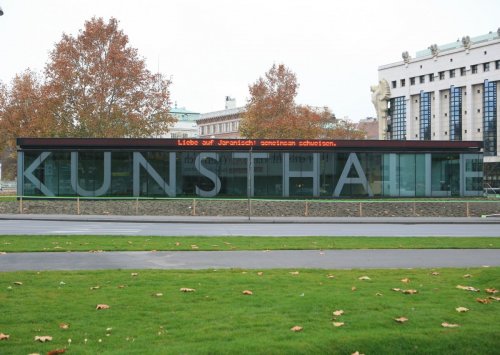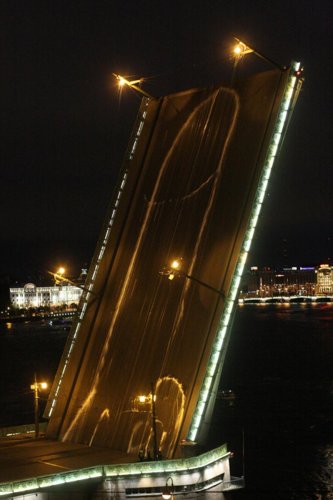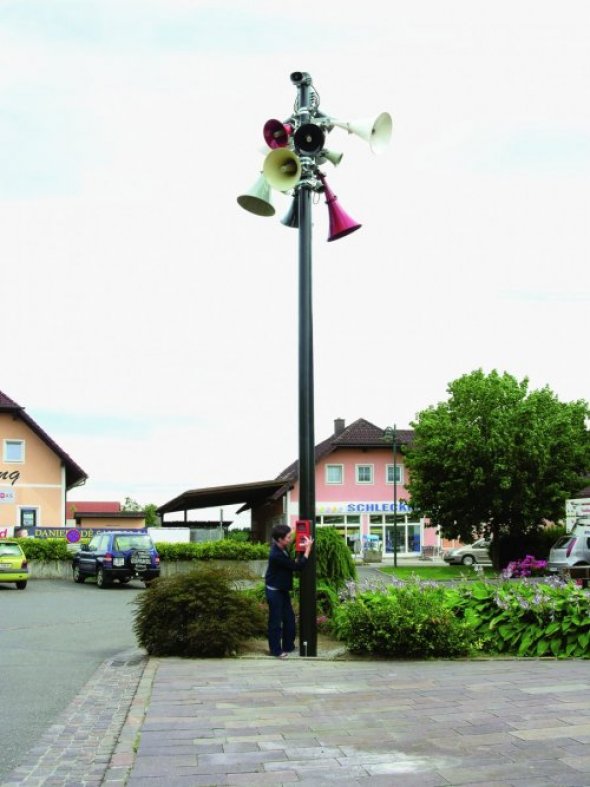With Immediate Effect
Artistic actions outside the gallery may vary widely in their approach to social space as material, but, as Sophie Schasiepen argues in this review, their representation inside the gallery rarely does
This exhibition, featuring work by 30 artists, groups and collectives, deals with the question of artistic strategies, practices and modes of intervening in the everyday. Compiled by a team of 16 people (all students from one of the first programmes with tuition fees at an art academy in Vienna, the ‘ECM: Educating, Curating and Managing Masters Programme’), the selection contains contributions from artists living in Vienna, London and South-East Europe. A programme of discussions, lectures, guided tours and a series of five interventions also took place in or around the exhibition space throughout the duration of the show.
An Everyday Approach to an Exhibition
The project space of the Kunsthalle Wien is located at the Karlsplatz on a traffic island in the middle of a busy junction. For some reason, it always seemed a non-space to me, possibly because its transparent and flat architecture make it relatively inconspicuous despite towering between the traffic lanes. Whoever wants to can catch a glimpse of the current exhibitions through one of the wide glass fronts. In the case of With Immediate Effect - Artistic Interventions in the Everyday, that onlooker would have seen nothing especially unusual, nothing that would have interrupted the ordinariness of the everyday.

Upon entering the exhibition space, this impression is reinforced. Not only is nothing awaiting the viewer that she hadn’t been expecting but, quite to the contrary, the sight of a few presentation boards displaying near identical arrangements of images and texts is so ordinary that it is almost insulting. The boards – which are distributed evenly but apparently at random through the room – are punctuated by two tables each with four video monitors, positioned on one wall. The layout of the space can thus be taken in quickly: in the middle, an archive of image and text material; on the side, moving images; and in the remaining space, a social area for sitting, discussing, participating in the exhibition’s blog and making tea and coffee.1
Strolling through the Material
With a little self-discipline, the stroll through the boards may begin. It is difficult not be distracted by the short, overly simplistic texts which accompany the works and reference other pieces in the room. That aside, with each work it becomes more entertaining to try to understand the various approaches which quite automatically coalesce into a very loosely linked but, due to the heterogeneity, also substantial, network of material for thought. The spectrum ranges from pieces like Ben Wilson’s reconfigurations of squelched chewing gum in public spaces, to Werner Reiterer’s Sculpture for the Advancement of Free Speech, to the documentation of the Voina group’s Dick Captured by the FSB action. While Wilson’s reconfigurations are a very inconspicuous, aesthetically conducted reinterpretation and reassessment of perception in public space involving the meticulous painting of chewing gum, they don’t address any political implications or discussions beyond the possible disruption of the aesthetic order. On the other hand Reiterer’s speaker construction literally announces its political intention. His sculpture was installed on a village square and twice a day, using an intercom, invites pedestrians to make use of their (democratic) right to free speech. The fact that it is unclear if Reiterer really intended the sarcasm of a call for speech in such a desolate space, how he reflected upon the impossibility of equal access to the amplifier and the extreme improbability of its use, not to mention if he ever questioned his affirmative usage of the term ‘democracy’, can hardly be seen as a productive ambiguity. Rather, this must only be read as a missing contextualisation by the artist and curators. The approach of the Voina Group is quite different in this regard. Their action, during which they break through the barrier of the Litenjny drawbridge in the early morning and draw a 65 meter tall and 20 meter wide phallus on the bridge, which is then raised soon after exactly opposite the Russian secret service headquarters, requires no further explanation.

Image: Voina, Dick Captured by FSB, 2010
The Everyday, Public Space and the Political
The clear majority of the pieces, including all of the interventions staged on site, take place on a level similar to Wilson’s chewing gum. Without wishing to deny the possible effects of such small ‘interventions in the everyday’, it remains unclear if and how the exhibition organisers grasp them theoretically and politically. In the introductory text of the catalogue, public space is described as a ‘place’ that ‘belongs to nobody and everybody’, ‘[is] demure and politically correct and also not personal’. That poses questions: if public space is not seen as a battlefield at all, and terms such as ‘democracy’ and ‘citizens’ are used in exhibition texts without being questioned, then how is it that pieces such as Voina's, but also Günter Brus’s Viennese City Stroll or Schlingensief’s container action, Please Love Austria, are displayed here? The obviated basis for an examination of power relations (not only) in public space is joined to a similarly clueless way of dealing with the field of the everyday and of art. The suspicion that arises while visiting the exhibition, namely that ‘artistic interventions’ are seen as provocative and thus critical contributions to the ideation and questioning of the public and social order, regardless of form and content, is strengthened once again in the catalogue text. The potential of art is contrasted with the everyday as being ‘a state of emergency, a stumbling block, at best the ideal nemesis of stiff structures’. That artistic provocation and 'states of emergency' are necessary components of a contemporary (neoliberal) everyday and therefore don’t irritate social order in themselves is never put in to question.
Another problem is that the backdrop of different economic and social situations against which these works were originally carried out is not really taken in to consideration. Thus, documentation of actions such as that by King Mob – who in 1968 distributed pamphlets entitled It Was Meant to Be Great But It’s Horrible: Confessions, S. Claus at Christmas time in London while a person dressed as Santa Claus took wares from the shelves and handed them out to children who were later forced to both return the wares and watch Santa being arrested – is placed beside documentation of the action HAPPSOC I which Stano Filko, Zita Kostrová and Alex Mlynárcik carried out in Bratislava in 1965. The group distributed invitations to a ‘Series of Realities’, in which they listed excerpts of statistical information about Bratislava (138,936 women, 142,090 street lamps, etc.) as participating objects and whose implementation period ran from 2 May, Labor Day, to 8 May, Day of the Celebration of the End of World War II. That both the use of the statistics and the time period between two such different national holidays presumably suggests criticism of the dominant social system is, in some ways, obvious but remains neglected by the curators. Their most significant characteristic remains the tangibility of non-stylised reality – postulated by the artists in an accompanying manifesto – and the expansion of the concept of art, not only in public spaces, but also in terms of the conversion of viewers into exhibits.
Whoever Said that it was Going to be Political?
Despite these criticisms, the question of how artists intervene in the everyday, which strategies and forms of action they employ, is substantially answered in this widely diverse arrangement of works. After all, the exhibition announcement didn’t promise any more than that. That the team then decided to choose a rather archival approach to presentation and thus to impart the immediacy of the questions not via the exhibited pieces, but rather via an abundance of information and discussion programmes, as well as additional interventions during the course of the exhibition, may be a surprisingly conservative and hardly adventurous solution. Yet it allows for an unburdened viewing of the works – a stroll through material homogenised in form which couldn’t be any more different in terms of approach, context and possible interpretation.
Sophie Schasiepen does waged work as personal assistant to a dis/abled woman, part of the editorial collective MALMOE (malmoe.org) and the collective FC Feminista, running a dykes/womyn/inter/trans-space (frauencafe.com) in Vienna
Credit
Thanks to Sam Osborn for the assistance translating this text
Info
Mit sofortiger Wirkung – künstlerische Eingriffe in den Alltag / With Immediate Effect - Artistic Interventions in the Everyday took place at Kunsthalle Wien project space, January 14th – January 29th, 2012
Footnotes
1 The fact that the coffee is sponsored by, of all people, the coffee provider who is under heavy criticism for its use of a stylized ‘Moor head’ as a logo is a political misstep that is not to be underestimated.
Mute Books Orders
For Mute Books distribution contact Anagram Books
contact@anagrambooks.com
For online purchases visit anagrambooks.com







